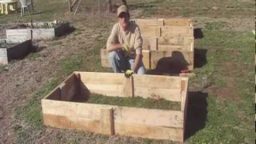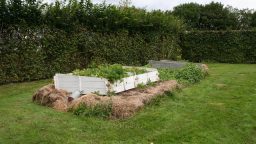If you have purchased lumber to build raised beds then you know how quickly it can get expensive. And not only the lumber, but the hardware like screws or nails to put it together. It all adds up and it adds up fast. But there is no need to spend your money on materials that are available for free. Follow these tips if you want to make raised beds for next to nothing.
Find Pallets
This step isn’t hard, businesses like Longs, Walgreen’s, Dollar General, and more, all receive the items that they sell on pallets. Some of these pallets are painted red or blue, but some of them are unpainted. The unpainted ones are the ones that you want, and they are the ones that they give away. That beings said, always ask, it would be shame to get arrested for stealing something that you could get for free down the street just because you didn’t ask first.
Dismantle
If you don’t have a truck then you might have to do this on site. That will be a lot more inconvenient. So, if you can get a friend to let you use their truck or drop the pallets at your house for you. You could use a hammer and a pry bar to dismantle the pallets, but I find that this is a lot of work and often the wood ends up splitting because there are so many nails in a small area. I just use a circular saw and cut off the ends where they are nailed together on both top and bottom. This leaves only the middle still nailed together which is easy to separate with a few knocks from a hammer and you only lose an inch and a half on each side.
Reassemble
Now you should have a pile of flat broad boards, and a pile of scrap 2×4’s. Depending on the size of the boards your pallets had you will probably want to make each side of your bed 3 boards tall. Take three boards and lay them flat with long end touching long end. Then cut a scrap 2×4 to place on each end and nail it in place. If you were careful when you removed the nails you can reuse them. Do this twice. This will leave you with two sides of your square bed, these sides will be opposite eachother, simply attach them using another 3 boards on each side.
This is only the most basic design, it can be altered to make your frames stackable, or rectangular, you can even make a keyhole bed with a little more work. But with the basic premise here you will be able to make raised bed frames for next to nothing.
If you liked this, you might also enjoy…
Natural Healing Techniques Doctors Don’t Want You to Know…
The Weight-Reducing Magic of Yoga…
The Ultimate Woodworking Course..

